- Home
- Nathaniel Philbrick
Bunker Hill: A City, a Siege, a Revolution Page 2
Bunker Hill: A City, a Siege, a Revolution Read online
Page 2
At that moment, some men disguised as Indians could be seen through the meetinghouse windows heading down Milk Street toward the wharves. The bitter rain that had been falling most of the day had stopped, and a bright moon shone in the darkening sky. The words that followed were so eerily prescient that they were still being repeated almost eighty years later by a Bostonian who’d been there that day in the east gallery. “I see the clouds which now rise thick and fast upon our horizon,” Quincy said, “the thunders roll, and the lightnings play, and to that God who rides on the whirlwind and directs the storm I commit my country.”
—
The last decade had been a time of growing discord and anxiety. Many looked to the passage of the Stamp Act in the summer of 1765 as the start of all their troubles, but it went back much further than that. From the very first, with the arrival of the original Puritan settlers in 1630, the inhabitants of Boston had seen themselves as an exceptional and essentially independent people. Their projected “city on a hill” was to be a shining example of what could be accomplished when men and women lived according to the true dictates of God beyond the reach of the Stuart kings and their bishops.
There had been complications along the way: internal religious controversies, conflicts with other settlements, a revolution back home in England, and in 1675, the outbreak of a ruinous war with the Indians; but through it all the colonists of Massachusetts had clung to the conviction that they constituted an autonomous enclave. In 1676, in the midst of King Philip’s War, the British agent Edward Randolph traveled to Boston and spoke with Massachusetts governor John Leverett. Even though his colony had been decimated by the ongoing struggle with the Indians, Leverett, whose blood-soaked leather battle jacket still exists, insisted that Massachusetts was, in essence, independent. “He freely declared to me,” Randolph wrote to King Charles II, “that the laws made by your Majesty and your Parliament obligeth them in nothing . . . , that your Majesty ought not to retrench their liberties, but may enlarge them if your Majesty please.” A hundred years before the Declaration of Independence, the governor of Massachusetts boldly insisted that the laws enacted by the colony’s legislature superseded those of even Parliament.
Leverett may have talked as if his colony were free to do whatever it wanted, but the truth proved quite different. It soon became apparent that the two-year war with the Indians had devastated Massachusetts. A third of its towns had been burned to the ground; only after decades would the colony’s median income level approach the prewar level. Having virtually annihilated their closest Indian allies, the New Englanders now lacked a buffer to protect them from the French and their Indian allies to the north. Over the course of the next century, an unrelenting series of brutal wars forced Great Britain to take an active part in the defense of the colony. Within a decade of King Philip’s War, the colony’s original charter had been revoked, and Massachusetts became a royal province ruled by a governor holding office at the pleasure of the king. In the confusion surrounding Britain’s Glorious Revolution of 1688, Bostonians took the opportunity a year later to jail Governor Edmund Andros and his hated customs surveyor Edward Randolph, the same official who thirteen years earlier had complained about Governor Leverett’s audacity. With the eventual arrival of a new charter and a new governor in 1692, an uneasy sense of order was reestablished in Massachusetts, even if the colonists never became reconciled to a governor whose first loyalty lay with Great Britain instead of them.
And always, it seemed, there was another war—a bloody business at which the New Englanders excelled. In 1690, the colony participated in the first of the assaults that would eventually turn the peninsular portion of French Acadia into British Nova Scotia. In 1745, Massachusetts mounted the New World equivalent of a crusade into Canada when an army of 4,200 provincial soldiers sailed from Boston in a fleet of ninety ships against the French fortress at Louisbourg. Despite receiving just token assistance from the British military, the colonial soldiers triumphed, only to see the fortress returned in subsequent treaty negotiations between Great Britain and France. After the eventual conquest of Canada in 1763, during which the provincials helped retake the fortress they had first won more than a decade before, the New Englanders turned their attention from the enemy to the north to anyone who might meddle in their affairs.
—
For most of the early eighteenth century the American colonies had enjoyed the benefits of a policy later known as “salutary neglect.” Left to do pretty much as they pleased, the colonies had been free to pursue economic growth unhindered by the onerous taxes paid by most British subjects. But by the end of the French and Indian War in 1763—a war fought, in large part, on the colonies’ behalf that had saddled Great Britain with a debt of about $22.4 billion in today’s U.S. currency—the ministry determined that it was time the colonies began to help pay for their imperial support.
Even the colonists admitted that they must contribute in some way to maintaining the British Empire. The question was how to go about raising the money. Well before the slogan “No taxation without representation” became a battle cry in America, the New Englanders’ Puritan ancestors had used the same logic to object to the early Stuarts’ attempts to increase taxes. But the colonies had more than just a principle behind their reluctance to be dictated to by the British ministry. They had three thousand miles of ocean between them and the mother country, along with seemingly limitless prospects for growth on a continent that stretched another three thousand miles to the Pacific Ocean. Rather than propose a means of raising revenue that they deemed fair, the colonials were more than happy to direct their considerable energies toward opposing whatever plan the British ministry put forward. When the old Puritan sense of certainty was combined with New England’s proven ability to put up a fight, it was not surprising that Massachusetts confronted the taxation question with a pugnacity reminiscent of the backwoods battles of the previous century.
In 1765 Parliament passed the Stamp Act, a bill that required colonists to purchase special paper embossed with a revenue stamp for legal documents, newspapers, journals, and other printed materials. Whereas the British government saw the act simply as a way for the colonists to begin paying for their keep, the colonists viewed the Stamp Act as a violation of their basic liberties. What surprised almost everyone was the violence the act inspired, particularly in Boston, where a mob ransacked the house of then lieutenant governor Thomas Hutchinson. Parliament quickly repealed the hated act in 1766, but not without insisting on its future right to tax the colonies. A year later, with the passage of the Townshend Acts, Parliament tried taxing only paper, paint, lead, glass, and tea imported from England. The revenues from these taxes were to be used to pay the salaries of colonial governors and judges, which the colonial legislatures had formerly paid with funds raised through locally administered taxes. Although in this instance the act relieved the province of a financial burden, it increased the likelihood that the officials would act in the best interests of the crown instead of the colonies. Boston merchants responded by refusing to import British goods, and by the spring of 1768 the Massachusetts legislature had sent out a circular letter encouraging the other colonies to support a nonimportation agreement.
Even more significant to relations with Britain was the creation of the American Customs Board to facilitate the collection of customs duties, monies that not only went toward paying the colonies’ collective tab back in Great Britain but also helped pay the salaries of the customs officers. The board’s five commissioners were headquartered in Boston and came to embody the loathsome “innovations” being insisted upon by the British ministry. Armed with what were known as “writs of assistance,” the officers did not have to obtain a warrant before searching ships, shops, and homes for smuggled goods. As early as 1761 the lawyer James Otis had argued that because these writs violated English constitutional rights, they were illegal. Otis lost the case in court, but New Englanders continued to insist u
pon their rights. In 1768 a riot erupted when officials seized John Hancock’s merchant vessel Liberty—an outbreak of violence that contributed to the decision by the British government to send several regiments of troops, known as the regular army, to Boston.
With the arrival of the regulars, the focus shifted from the issue of taxation to the evils of a military occupation. Patriot leaders began keeping a journalistic diary of the many abuses the townspeople supposedly suffered at the hands of the soldiers. On the night of March 5, 1770, escalating tensions climaxed in what came to be known as the Boston Massacre. An angry crowd of sailors, artisans, apprentices, and boys surrounded a small group of regulars, who in the confusion of the moment fired their muskets. When the fusillade ceased, five people lay dead or mortally wounded. Outrage swept through the city’s unlit network of convoluted streets as hundreds and then thousands of Bostonians surged into the center of town. With the people threatening to attack the soldiers, Lieutenant Governor Thomas Hutchinson appeared on the balcony of the Town House and promised that “the law should have its course.” The crowd reluctantly dispersed. After several rancorous town meetings, the regulars were withdrawn from Boston.
The trial of the British soldiers was delayed until the fall, but several months before that, in late June 1770, a comet appeared in the night sky. John Greenwood, then ten years old, remembered that more than just a comet had blazed over Boston. “Armies of soldiery had been seen fighting in the clouds overhead,” he wrote; “and it was said that the day of judgment was at hand, when the moon would turn into blood and the world be set on fire.” The regiments of soldiers were gone, but the sense of foreboding was stronger than ever. “For my part,” he remembered, “all I wished was that a church which stood by the side of my father’s garden would fall on me at the time these terrible things happened, and crush me to death at once, so as to be out of pain quick.”
Due in large part to the brilliance of Josiah Quincy and John Adams, the accused soldiers were either found not guilty or were convicted of manslaughter, which entailed the comparatively minor punishment of branding on the base of the thumb. With a partial repeal of the Townshend Acts, a period of calm settled across New England. And then, in the summer of 1773, more than three years after the Massacre, Bostonians learned of the passage of the Tea Act.
—
The British ministry had a problem. The crown-chartered East India Company was burdened with too much tea. To eliminate that surplus, it was decided to offer the tea to the American colonies at the drastically reduced price of two shillings per pound—a third less than the original price. Unfortunately and unwisely, Parliament included in the reduced price a tiny tax of three pence per pound. This gave the patriots ideological grounds on which to object to an act that might otherwise have been viewed as a windfall for the colonial consumer. The ministry made the additional tactical error of allowing only a handful of privileged “consignees” (all of them loyalists) to act as agents for the East India Company. The patriots were able to claim that the legislation was a thinly veiled attempt to impose a London-centered commercial monopoly on the colonies, and Bostonians followed New York and Pennsylvania in strongly opposing the Tea Act.
Other, less noble reasons motivated the patriots. Many Boston merchants sold illegal Dutch tea procured from the Caribbean island of St. Eustatius (known today simply as Statia). Since the low-priced East India tea would undersell the smuggled Dutch tea, the merchants stood to lose significant income. Then there was the grudge that a leading Boston merchant had with the island of Nantucket.
New England, unlike the southern colonies and the British islands of the Caribbean, did not have a staple crop such as tobacco or sugar. It did have, however, whale oil, which accounted for more than half the region’s exports to Great Britain, at least in terms of their value. Since much, if not most, of the whale oil was shipped directly to England from the tiny, largely loyalist island of Nantucket, Boston merchants had been relegated to the margins of this lucrative trade. This had not prevented John Hancock from spending the last decade—and a significant portion of the fortune he had inherited from his uncle—trying to corner the whale oil market by buying up available supplies and controlling their delivery to London. Nantucket’s wily Quaker merchants, however, had managed to frustrate his every move.
Two of the three ships tied up to Griffin’s Wharf in Boston on December 16, 1773, were Nantucket vessels that had taken on East India tea after unloading their shipments of whale oil in London. Hancock, who had emerged as the preeminent public figure associated with the patriot cause, now had at long last a way to make at least one of the islanders defer to his wishes. It was all in the name of patriot ideals, of course, but for Hancock it must have been a form of sweet revenge to watch as one of his hated rivals, the Nantucket merchant prince Francis Rotch (pronounced “Roach”), stood trembling before the gathering at the Old South Meetinghouse.
The chronology of what occurred after Rotch returned from making his desperate appeal to Governor Hutchinson is hazy, but we do know that once he explained to the crowd in the meetinghouse that the governor had refused to allow his ship the Dartmouth to leave Boston Harbor without unloading the tea, shouts erupted that could be heard several blocks away. At some point, people began to pour out into the streets, and soon enough, more than a hundred Bostonians disguised as Indians were dumping chests of tea into the harbor.
Unfortunately, the tide was out. The tea leaves heaped in the shallows surrounding the ships, requiring that boys scamper across the mudflats and try to scatter the clumps with their hands and feet. By the next morning the swirling tide and wind had created an undulant cat’s cradle of tea: crisscrossing lines of brown-flecked spindrift that reached from the docks and shipyards of Boston’s South End toward Castle Island, three miles to the east. It was to here, at what was known simply as the Castle, where a fort and a regiment of British soldiers provided them with protection, that the half-dozen or so tea consignees had fled to escape the angry crowds back in Boston.
If the patriots had their way, that was where they would stay. But as Admiral John Montagu reminded several townspeople soon after what came to be called the Boston Tea Party, someday the piper had to be paid.
—
Almost a month later, on the morning of January 15, 1774, as a city waited with mounting dread for word of how the British government was going to respond to the outrage committed at Griffin’s Wharf, a mysterious costumed defender of the people’s liberties announced his presence amid the cold, wind-blown streets of Boston. In tribute to the Puritans’ revolutionary past, he called himself Joyce Junior after Cornet George Joyce, an officer in the parliamentary New Model Army of the English Civil War. Joyce had been credited with capturing King Charles; he had also been present when the British sovereign was beheaded. By adopting the name of a notorious regicide, Joyce Junior was evoking the memory of a time when English subjects had dared to do the unthinkable: overthrow and execute their king.
In a handbill that appeared in “the most public spaces” of Boston that Saturday, Joyce Junior vowed to punish any of the tea consignees who tried to leave Castle Island, exhorting his “Brethren and Fellow Citizens” to help him give the consignees “such a reception as such vile ingrates deserve.” What that reception might entail was suggested by the title Joyce Junior ascribed to himself at the bottom of the handbill: “Chairman of the Committee for Tarring and Feathering.”
The appearance of this particular character was a recent phenomenon, but the persona—that of a shadowy enforcer—was nothing new to Boston. Some version of the upstart regicide had been part of the annual celebration known as Pope Night. Every November 5, two rival gangs of boys and apprentices from the city’s North and South Ends (divided by the creek that flowed from Mill Pond to the harbor) marched behind carts that displayed the figures of the pope and the devil. The ultimate object of Pope Night was to seize the opponent’s cart, and the inevitable b
attle resulted in untold broken bones and in 1764 even a boy’s death. Based on the British tradition of Guy Fawkes Day, which celebrated the foiling of a 1605 plot to blow up Parliament and the king, Pope Night emphasized not the miraculous salvation of royal government but Congregational New England’s long-standing hatred of the Catholic Church. Presiding over the bare-knuckled tumult of Pope Night appears to have been a Joyce Junior–like figure wearing a white wig, red cloak, large boots, a sword, and what was described as a “horrible” mask.
Yet another version of Joyce Junior was spotted during the uproar that preceded the Boston Massacre in 1770. A “tall man in a red cloak and white wig” was seen haranguing the crowd at Dock Square before the townspeople headed toward the center of town for the final encounter with the British soldiers. This may have been the same shadowy figure that at least one witness claimed was standing behind the beleaguered regulars, exhorting them to fire.
Although Joyce Junior wore a mask, many in Boston undoubtedly knew the identity of the man who claimed to be the chairman of the committee of tarring and feathering. He threatened and boasted like a seasoned sailor from the rough-and-tumble world of the Boston waterfront, but Joyce Junior was in actuality the twenty-six-year-old son of Harvard professor John Winthrop, whose great-great-grandfather of the same name had been a founder of the Massachusetts Bay Colony. Professor Winthrop’s son (also named John, and thus a junior on two accounts) had been publicly admonished while an undergraduate at Harvard “for making indecent tumultuous noises in the college.” By 1773 he was a merchant with a general store on Treat’s Wharf. Just before the Tea Party, he was part of a group charged with preventing the East India tea from being landed from the ships. Now he was doing everything in his power to make sure the streets were free of tea consignees and other “traitors to their country.”

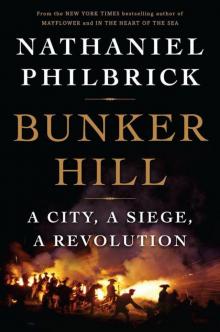 Bunker Hill: A City, a Siege, a Revolution
Bunker Hill: A City, a Siege, a Revolution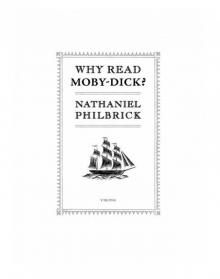 Why Read Moby-Dick?
Why Read Moby-Dick? Second Wind: A Nantucket Sailor's Odyssey
Second Wind: A Nantucket Sailor's Odyssey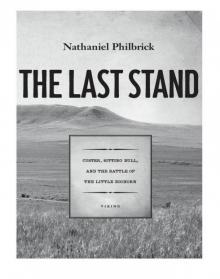 The Last Stand: Custer, Sitting Bull, and the Battle of the Little Bighorn
The Last Stand: Custer, Sitting Bull, and the Battle of the Little Bighorn In the Heart of the Sea: The Epic True Story That Inspired Moby-Dick
In the Heart of the Sea: The Epic True Story That Inspired Moby-Dick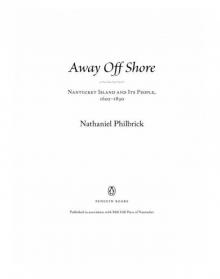 Away Off Shore: Nantucket Island and Its People, 1602-1890
Away Off Shore: Nantucket Island and Its People, 1602-1890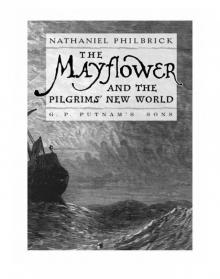 The Mayflower and the Pilgrims' New World
The Mayflower and the Pilgrims' New World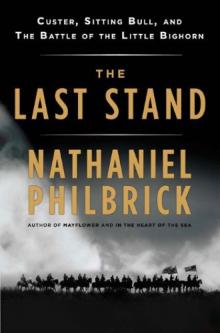 The Last Stand: Custer, Sitting Bull and the Battle of the Little Big Horn
The Last Stand: Custer, Sitting Bull and the Battle of the Little Big Horn Second Wind
Second Wind Away Off Shore
Away Off Shore The Mayflower and the Pilgrims' New World*
The Mayflower and the Pilgrims' New World*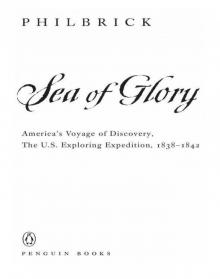 Sea of Glory
Sea of Glory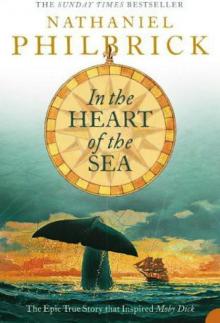 In the Heart of the Sea
In the Heart of the Sea The Last Stand
The Last Stand In the Hurricane's Eye
In the Hurricane's Eye